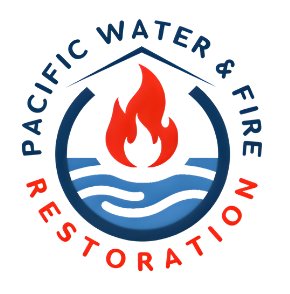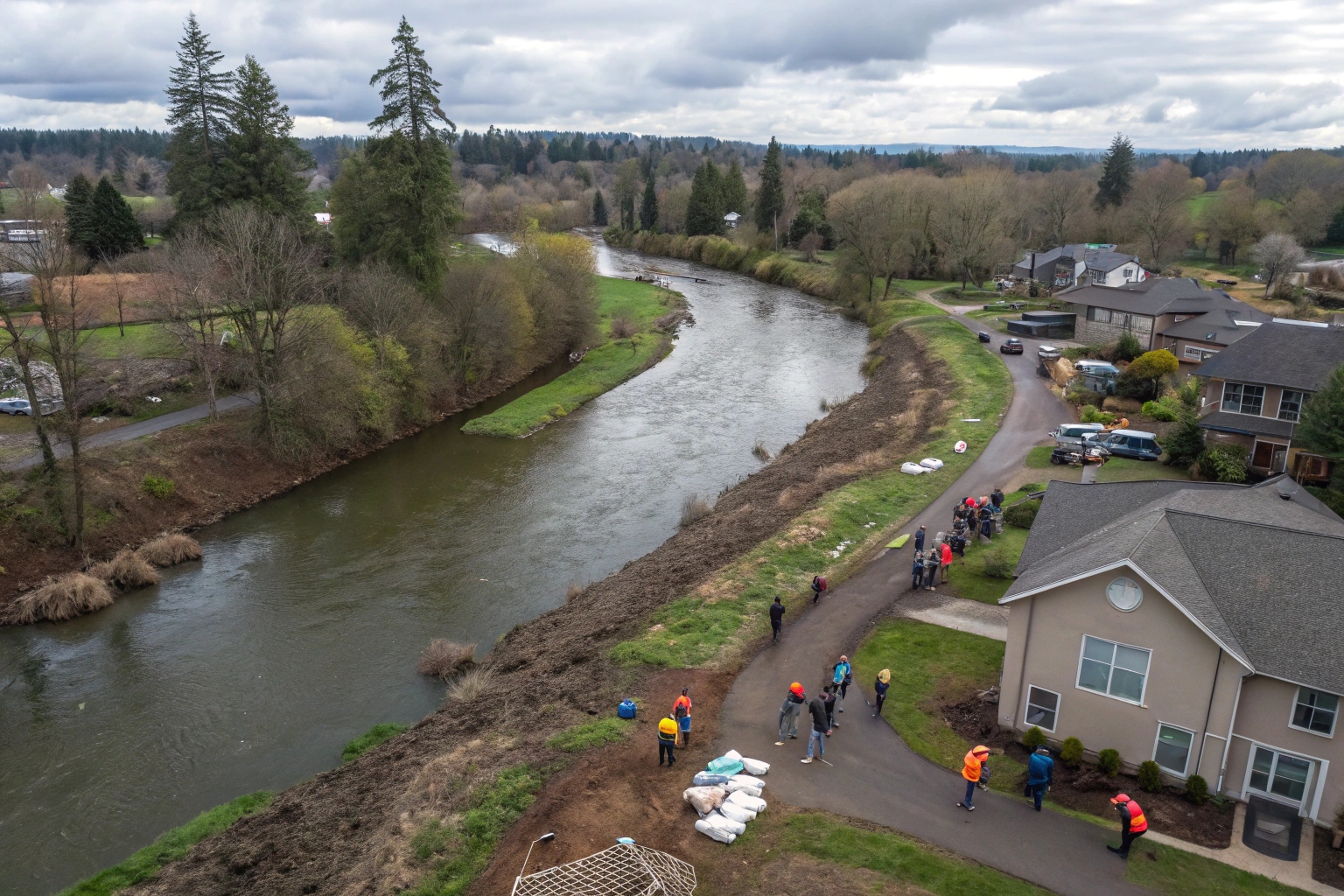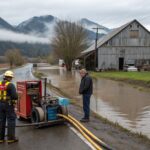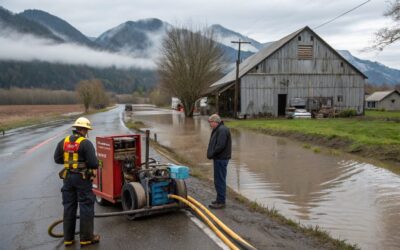Introduction: Cornelius and Its Relationship with the Tualatin River
Nestled in Washington County just 25 miles west of Portland, the city of Cornelius has long maintained a complex relationship with the Tualatin River and its tributaries. While these waterways have nurtured the region’s agricultural abundance and natural beauty, they also present significant flooding challenges for residents and businesses. As climate patterns shift and urban development continues, Cornelius has evolved a distinctly community-oriented approach to flood preparedness, response, and recovery that offers valuable lessons for property owners throughout the Portland metro area.
At Pacific Water & Fire Restoration, we’ve witnessed firsthand how Cornelius’ community-based strategies have made a remarkable difference in minimizing damage and accelerating recovery after flooding events. This approach combines traditional emergency management with innovative neighbor-to-neighbor coordination that has proven effective during recent flood incidents.
Understanding Cornelius’ Flood Risk Profile
The Tualatin River Watershed and Local Hydrology
Cornelius sits within the broader Tualatin River watershed, a 712-square-mile drainage basin that collects water from the Coast Range and channels it eastward through Washington County. Several key factors make Cornelius particularly vulnerable to flooding:
- Low-lying topography – Parts of Cornelius sit in natural floodplain areas where water has historically collected
- Multiple water sources – The city deals with water from both the Tualatin River and its tributaries, including Dairy Creek
- Seasonal precipitation patterns – The Pacific Northwest’s wet season (November through March) can deliver intense rainfall over extended periods
- Upstream conditions – Development and land use changes in the upper watershed affect water flow into Cornelius
- Soil saturation dynamics – The region’s clay-rich soils can quickly become saturated, increasing surface runoff
According to data from the National Weather Service, Cornelius receives approximately 40 inches of rain annually, with nearly 75% falling during the wet season months. These precipitation patterns, combined with the area’s topography, create predictable—but increasingly intense—seasonal flood risks.
Historical Flooding Events and Impacts
Cornelius has experienced several significant flooding events that have shaped its approach to flood management:
- February 1996 Floods – The benchmark flooding event for modern Cornelius, when warm rain fell on deep snowpack, causing rapid melting and widespread damage to homes and businesses
- January 2009 Flooding – Heavy rainfall combined with snowmelt caused significant urban flooding and sewer backups
- December 2015 Storms – Intense rainfall over a 72-hour period overwhelmed drainage systems in several neighborhoods
- February 2020 Atmospheric River Event – Concentrated, heavy rainfall caused localized flooding in low-lying areas
These events have demonstrated that flooding in Cornelius often affects predictable areas but can vary significantly in intensity. Local emergency management data indicates that properties within the 100-year floodplain have a 26% chance of experiencing flood damage during a 30-year mortgage period.
Cornelius’ Community-Based Approach to Flood Management
The Evolution of Local Flood Response Strategies
What makes Cornelius’ approach to flooding noteworthy is how it has evolved from a purely government-led response to a true community partnership. After the devastating 1996 floods, city leaders recognized that traditional emergency management alone couldn’t adequately address the community’s needs, especially in a small city with limited resources.
The city initiated a comprehensive review of its flood management approach, resulting in the Cornelius Community Flood Response Plan (CCFRP) adopted in 1998 and substantially updated in 2012 and 2019. This plan emphasizes three key principles:
- Shared responsibility – Recognizing that effective flood management requires active participation from property owners, businesses, and government
- Neighborhood-level coordination – Organizing preparedness and response at the neighborhood scale
- Integrated recovery support – Combining official resources with community assistance during recovery
This approach has proven particularly effective in Cornelius, where strong community ties and a practical, collaborative spirit have allowed for innovative solutions that larger cities might struggle to implement.
Neighborhood Flood Response Teams
One of the most successful elements of Cornelius’ approach has been the development of Neighborhood Flood Response Teams (NFRTs). These volunteer-led teams operate within defined geographic areas and serve multiple functions:
- Early warning networks – Using local knowledge to identify rising water levels before they become emergency situations
- Resource coordination – Maintaining inventories of available equipment (pumps, sandbags, etc.) and connecting them with those in need
- Vulnerable resident identification – Ensuring elderly, disabled, or other vulnerable residents receive priority assistance
- Communication hubs – Providing real-time updates when official channels may be overwhelmed
Currently, Cornelius maintains seven active NFRTs covering approximately 85% of the city’s residential areas. These teams conduct bi-annual training exercises and maintain communication channels through both traditional methods and modern tools like neighborhood-specific text alerts and social media groups.
Pro Tip: Cornelius residents can determine which NFRT covers their property and sign up for alerts by visiting the city’s emergency management website or calling city hall at 503-357-9112.
City-Community Coordination Framework
Complementing the neighborhood-level response is a structured coordination framework between city resources and community teams. This system includes:
- Tiered activation protocol – Clear triggers for when NFRTs should activate based on weather forecasts and river gauge readings
- Resource deployment staging – Pre-positioned flood response supplies at strategic locations throughout the city
- Unified communications plan – Consistent messaging across official and community channels
- Integrated decision-making – Community team leaders participate in emergency operations briefings
This framework ensures that limited official resources are deployed efficiently while empowering residents to take appropriate actions quickly. During the 2020 atmospheric river event, this system allowed for the distribution of over 3,000 sandbags and deployment of 12 water pumps within 90 minutes of the initial alert—far faster than would have been possible through official channels alone.
Property-Level Preparation: Lessons from Cornelius
Assessing Individual Property Vulnerability
Cornelius property owners have developed a systematic approach to understanding and addressing their specific flood risks. This property-level assessment includes:
- Elevation analysis – Understanding a property’s elevation relative to known flood levels
- Water pathway identification – Identifying how water approaches and moves around structures
- Documentation of vulnerable points – Mapping potentially vulnerable building entry points like doorways, foundation cracks, and utility penetrations
- Historical flooding patterns – Researching previous water intrusion on the property
- Drainage evaluation – Assessing how effectively water moves away from the property
Safety Warning: When assessing your property during wet weather, always prioritize personal safety. Never enter flooded areas or attempt to walk through moving water, which can be deceptively powerful even at shallow depths.
Practical Flood-Proofing Measures for Cornelius Properties
Based on local conditions and experiences, Cornelius property owners have implemented several effective flood-proofing strategies:
- Strategic landscaping – Creating swales and berms to direct water away from structures
- Rainwater management systems – Installing rain gardens and collection systems to manage water during heavy precipitation
- Foundation waterproofing – Applying appropriate sealants and membranes to prevent water intrusion
- Backflow prevention – Installing check valves on sewer lines to prevent backups during high-water events
- Elevation of critical systems – Raising electrical panels, HVAC equipment, and appliances above potential flood levels
- Permeable surface installation – Using materials that allow water to percolate rather than run off
According to FEMA, every dollar spent on flood mitigation saves an average of $6 in future damages. In Cornelius, properties that implemented comprehensive flood-proofing measures before the 2015 storms reported 62% less damage than similarly situated properties without these improvements.
Emergency Response Kits and Plans
Cornelius residents have refined the concept of flood emergency kits beyond the basics. A comprehensive Cornelius-style flood kit typically includes:
- Standard emergency supplies – Water, non-perishable food, medications, first aid supplies
- Flood-specific tools – Submersible pumps, wet/dry vacuums, extension cords and hoses
- Water barriers – Sandbags or modern alternatives like quick-dam barriers
- Documentation package – Waterproof container with insurance information, property inventories, and contact numbers
- Cleanup supplies – Disinfectants, mops, fans, and dehumidifiers for initial recovery
- Communication tools – Weather radio, portable chargers, neighborhood contact list
Pro Tip: Store flood emergency supplies in waterproof containers in an easily accessible location above potential flood levels. Pacific Water & Fire Restoration recommends keeping critical supplies on both the main floor and upper levels of multi-story buildings.
Case Study: The Council Creek Neighborhood Response
The 2020 Atmospheric River Event
In February 2020, Cornelius experienced an atmospheric river event that delivered over 4.5 inches of rain in a 30-hour period. The Council Creek neighborhood, located in the northwestern section of Cornelius, provides an excellent case study in effective community-based flood response.
Timeline of Events:
- February 5, 4:30 PM – National Weather Service issues flood watch for Washington County
- February 5, 6:00 PM – Council Creek NFRT activates alert system to all registered residents
- February 5, 7:15 PM – Team deploys to neighborhood equipment cache and begins distributing supplies
- February 6, 2:00 AM – First reports of water approaching structures in low-lying areas
- February 6, 3:30 AM – Team coordinates with city emergency operations to deploy pumps to most vulnerable areas
- February 6, 7:00 AM – Peak water levels reached, affecting 14 properties
- February 6, 2:00 PM – Water begins receding
- February 7 – Community recovery efforts begin
Successful Actions and Community Coordination
Several aspects of the Council Creek response demonstrated the effectiveness of Cornelius’ community-based approach:
- Early intervention – Pre-positioning of resources allowed homeowners to deploy protective measures before water reached structures
- Prioritized assistance – Team directed resources first to homes of elderly residents and those with accessibility challenges
- Equipment sharing – Residents with pumps and wet vacuums shared equipment on a rotating schedule
- Information coordination – Regular updates through the neighborhood text system prevented rumors and kept residents informed
- Staggered recovery assistance – Team organized volunteers to help with cleanup in order of damage severity
Recovery Process and Lessons Learned
The recovery process in Council Creek revealed several valuable lessons:
- Immediate documentation – Properties where owners documented damage immediately with photos and videos experienced faster insurance claim processing
- Quick water extraction – Homes where standing water was removed within 24 hours experienced significantly less secondary damage
- Professional assessment timing – Properties that received professional assessment within 48 hours avoided many long-term moisture problems
- Coordinated drying equipment – Sharing of fans and dehumidifiers through the NFRT allowed for more effective drying throughout the neighborhood
- Group purchasing power – Coordinated ordering of replacement materials resulted in cost savings and faster delivery
Of the 14 affected properties, 12 were fully restored within three weeks, with only two requiring more extensive repairs due to pre-existing construction issues. This recovery timeline was approximately 40% faster than comparable flooding events in areas without community-based response systems.
The Role of Professional Restoration in the Cornelius Model
When to Call Professionals
While Cornelius’ community approach emphasizes self-help and neighbor assistance, residents recognize that professional restoration services play a crucial role in effective recovery. The community model includes clear guidelines for when to engage professional help:
- Standing water deeper than 2 inches – Indicates potential for structural damage and mold development
- Water contact with electrical systems – Creates safety hazards requiring professional assessment
- Suspected contaminated water – May contain sewage or chemicals requiring specialized handling
- Water-affected drywall or insulation – Requires proper removal to prevent long-term moisture problems
- Multi-layer flooring materials – Need professional equipment for complete drying
- Water presence for more than 24 hours – Increases risk of mold and bacterial growth
The Cornelius model emphasizes that early professional assessment, even if full restoration services aren’t immediately needed, can prevent costly complications later in the recovery process.
Integrating Community and Professional Resources
Pacific Water & Fire Restoration has worked extensively with Cornelius residents to develop an approach that effectively combines community efforts with professional services:
- Initial community response for immediate water diversion and basic protection
- Professional assessment to evaluate damage scope and safety concerns
- Community-assisted preparation including furniture movement and content protection
- Professional extraction and drying using industrial equipment
- Coordinated reconstruction combining professional services with community volunteer support for non-technical tasks
This integrated approach maximizes the effectiveness of professional restoration while reducing overall costs and strengthening community bonds. During the 2020 event, properties using this model reported restoration costs averaging 30% lower than traditional individual-professional approaches.
Insurance Considerations for Cornelius Property Owners
Understanding Coverage in Flood-Prone Areas
Cornelius’ location within the Tualatin watershed creates specific insurance considerations for property owners:
- National Flood Insurance Program (NFIP) zones – Different parts of Cornelius fall into different NFIP zones, affecting coverage availability and cost
- Standard policy exclusions – Many homeowners are surprised to discover standard policies typically exclude flood damage
- Sewer backup coverage – Often available as a separate endorsement, critical in areas where flooding can cause sewer systems to back up
- Actual Cash Value vs. Replacement Cost – Significant difference in coverage outcomes, especially for older properties
- Wait periods – Most flood insurance policies include a 30-day waiting period before coverage begins
According to insurance industry data, approximately 40% of Cornelius properties have some form of flood coverage, compared to only 15% nationally for properties in similar flood risk areas.
Documentation and Claims Process Best Practices
Cornelius’ NFRTs provide guidance on documentation and claims processes based on collective experience:
- Pre-flood inventory – Maintaining updated documentation of property condition and contents before flooding occurs
- Real-time documentation – Photographing and recording water levels and damage during the event when safe to do so
- Chronological records – Keeping detailed logs of all actions taken to protect and restore property
- Professional assessment reports – Having damage professionally documented even if completing some repairs independently
- Communication records – Maintaining records of all interactions with insurance adjusters and restoration professionals
Pro Tip: Pacific Water & Fire Restoration offers free pre-flood documentation services for Cornelius property owners, creating baseline records that can be invaluable during insurance claims. Contact us at 503-201-7337 to schedule this service.
Conclusion: Building on Cornelius’ Success
Transferable Lessons for Other Communities
The Cornelius approach offers valuable lessons that can be adapted by other communities in the Portland metro area:
- Scale-appropriate organization – Organizing at the neighborhood level creates manageable coordination units
- Formal-informal partnerships – Creating structured relationships between official resources and community efforts
- Proactive vulnerability mapping – Identifying at-risk properties before emergencies occur
- Shared resource systems – Developing equipment sharing networks to maximize resource efficiency
- Tiered response protocols – Creating clear activation triggers based on measurable conditions
- Knowledge transfer systems – Documenting and sharing effective practices after each event
While each community faces unique flood challenges, the fundamental principles of Cornelius’ approach—shared responsibility, neighborhood coordination, and integrated recovery—can strengthen flood resilience throughout our region.
Continuing Evolution of the Cornelius Model
Cornelius continues to refine its approach, with recent innovations including:
- Predictive mapping integration – Using advanced modeling to predict flooding patterns with greater precision
- Digital resource tracking – Implementing real-time tracking of community resources during flood events
- Multi-generational engagement – Specifically involving youth and seniors in preparation and response
- Climate adaptation planning – Adjusting strategies to account for changing precipitation patterns
These ongoing improvements ensure the Cornelius model remains effective as both climate conditions and community needs evolve.
How Pacific Water & Fire Restoration Can Help
As Portland’s trusted restoration experts with extensive experience in Cornelius and throughout Washington County, we offer specialized services for flood-prone areas:
- Pre-flood property assessments to identify vulnerabilities and recommend improvements
- Emergency response planning for homes and businesses
- 24/7 emergency water extraction when flooding occurs
- Complete restoration services from initial mitigation through reconstruction
- Documentation assistance for insurance claims
- Free community workshops on flood preparation and response
Don’t wait until the Tualatin rises. Contact Pacific Water & Fire Restoration today:
- Emergency Services: 503-201-7337 (available 24/7)
- Schedule a Free Assessment: Visit pacificwaterandfirerestoration.com or call our office
- Learn More: Attend our monthly community preparedness workshops (details on our website)
Our IICRC-certified professionals are ready to help you protect what matters most, using lessons learned from Cornelius’ innovative approach to create the most effective flood protection and recovery strategies for your property.
Pacific Water & Fire Restoration is a full-service property restoration company serving Portland and surrounding communities including Cornelius. With IICRC certification and 24/7 emergency response, we’re committed to helping property owners before, during, and after disasters strike.









